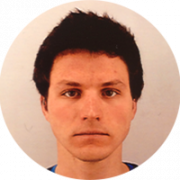
Samuel Favrichon
Samuel is a remote sensing scientist specialised in Earth observation through satellite passive microwave measurements. Following an engineering diploma in computer science and data analysis from Université de Technologie de Compiègne, he earned a PhD from Observatoire de Paris focusing on the measurement of global Land Surface Temperature. Relying on the combination of physical models and statistical tools, this work helps better understand the interactions between microwave radiations and geophysical variables. The measurement of vegetation and associated biomass became a topic of interest while working at the Jet Propulsion Lab. There he worked on the estimation of global forest structure and its evolution on a global scale at different resolution leveraging multiple observing systems.
Vegetation is a central component of the Earth’s system, governing surface water exchanges and constituting one of the largest terrestrial carbon reservoirs. Ongoing disturbances, whether natural or human-induced, combined with the impacts of changing climate, induce rapid alterations on a global scale. Accurate and consistent assessments of vegetation status are imperative to meet the needs of user communities, including earth system modeling and policymakers.
Knowledge gaps persist regarding the dynamics of vegetation, spanning from biomass content to its response to fluctuations in water availability. Moreover, comprehensive, long-term evaluations of these critical parameters on a global scale have yet to be undertaken. While advancements have been made with high-resolution datasets and space borne LiDAR to accurately estimate vegetation structure and the associated biomass, their temporal coverage remains limited. Similarly, single-instrument retrievals of vegetation indices, offer extended temporal scope but have limited inter instruments consistency.
Microwave observations provide all-weather insights and penetrate surface vegetation cover for in-depth information. Active sensors can provide the highest resolution with Synthetic Aperture Radars but also coarse resolution with scatterometers (e.g. ASCAT). Passive radiometers have coarser resolution but ensure almost daily global coverage, with up to four decades of continuous observation from successive sensors. These distinct sources provide a fundamental set of observations to advance scientific knowledge of the hydrologic and carbon cycle from vegetation.
This project aims to enhance long term above-ground biomass (AGB) estimation using satellite microwave observations. By leveraging multiple frequencies and observations from different instruments, we will generate AGB maps. The project’s outcome will be a multi-decade global AGB dataset, improving our understanding of long-term vegetation dynamics. Additionally, we will ensure consistency between AGB maps from different epochs and scales.